Sotheby's Space Exploration Sale 2019
This Saturday 20th July, exactly 50 years to the day since Neil Armstrong stepped foot on the surface of the Moon, Sotheby's will host its third annual Space Exploration auction in New York.
The sale will feature a wide variety of material from the Mercury, Gemini, and Apollo missions, featuring direct consignments from astronauts including Apollo 13 Mission Commander James Lovell; Apollo 9 Lunar Module Pilot Russell Schweickart; and the Estate of John Young, who enjoyed the longest career of any astronaut. The sale also offers an impressive collection of flown mission artefacts and hardware, the finest single owner collection of flown Robbins medallions, early contractor’s models, spacesuits, maps, charts and much more.
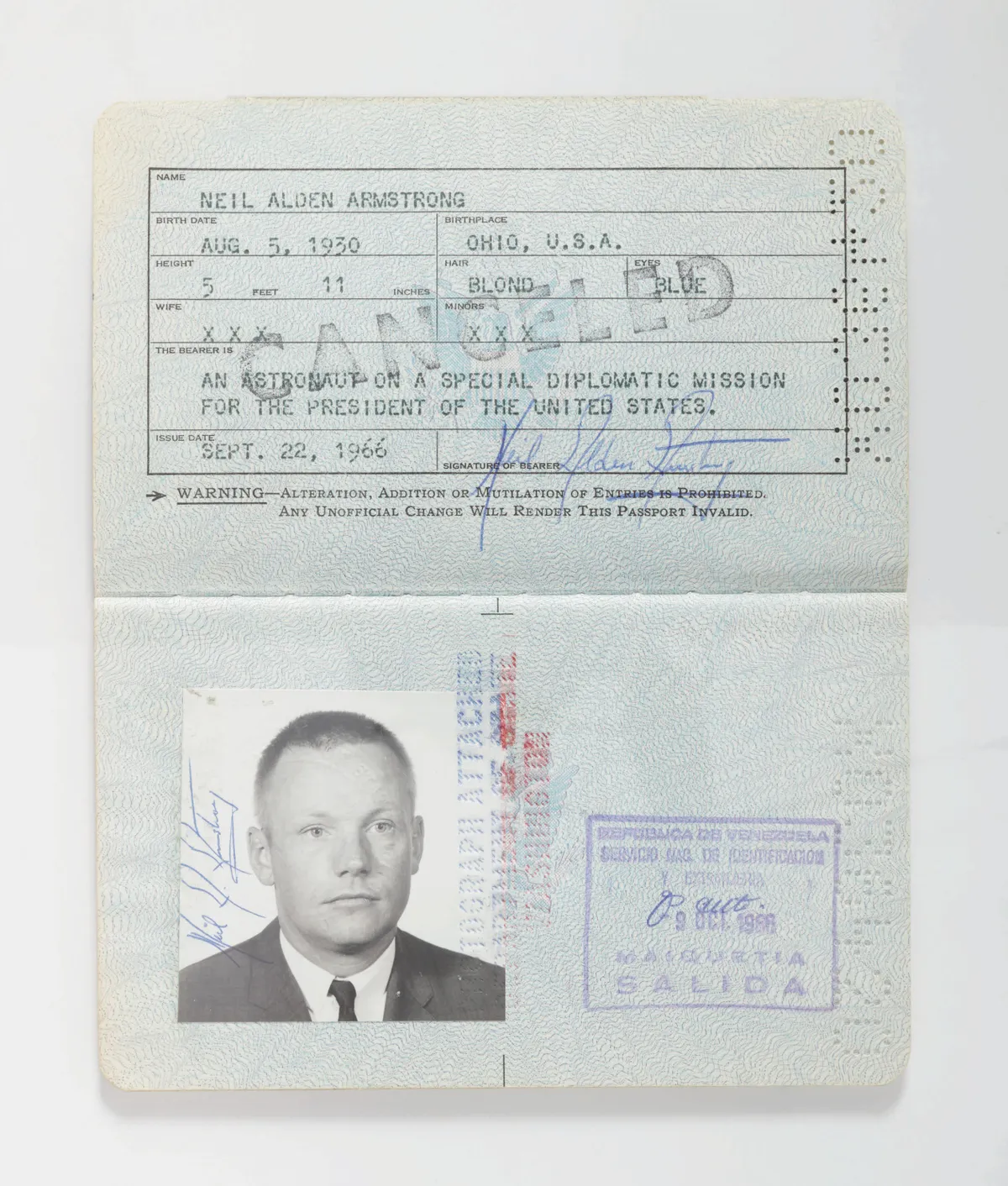
One item on offer is a group of Six American Passports issued to Neil Armstrong from 1954 to 1979, including his Special Passport, used while going through astronaut training and when conducting official business for NASA.
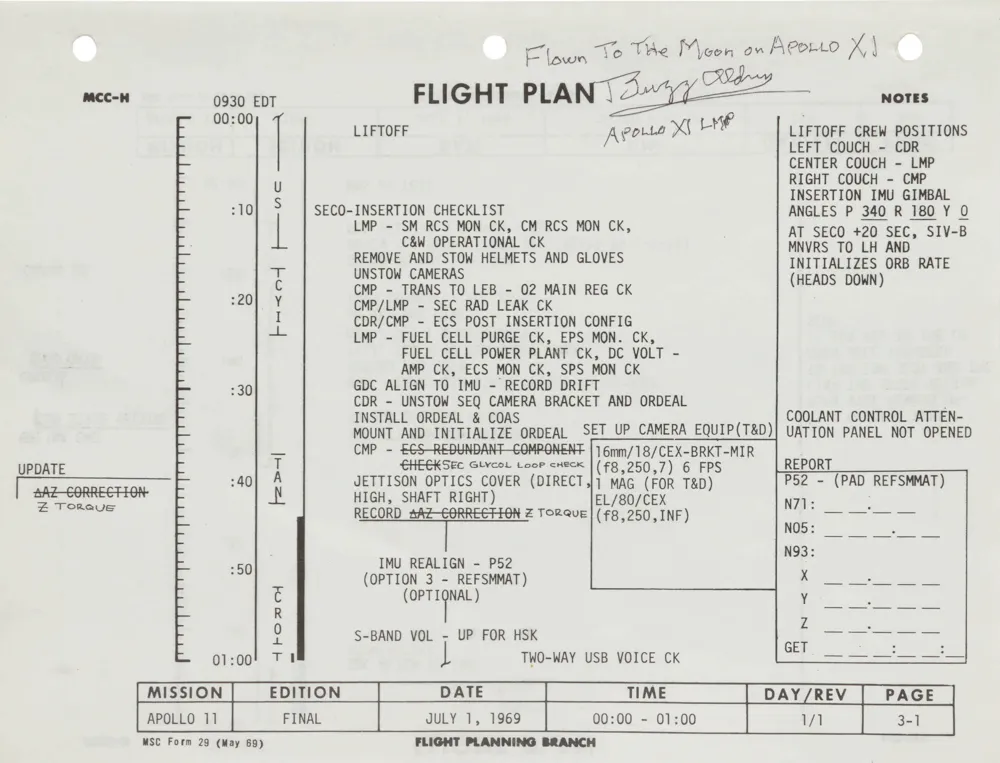
A highlight of the Space Exploration auction, Sotheby's is offering property directly from the personal collection of Apollo 11 Lunar Module Pilot Buzz Aldrin. The items consigned to Aldrin are led by a selection of pages from the Flown Apollo 11 Flight Plan and Data File – the manuals used by Neil Armstrong, Buzz Aldrin and Michael Collins to guide them on their great adventure. Each sheet is signed and inscribed by Aldrin.
Our mission was a mission for all of mankind. It’s been an honor to look after these documents for the last 50 years, which bore witness to that historic event. As we look forward to the landmark anniversary, I decided that it was time to share them with a new generation of collectors, who can enjoy them for the next 50 years and beyond. I’m thrilled to be working exclusively with Sotheby’s to offer these significant artefacts, at this time.
Buzz Aldrin
The star of the show
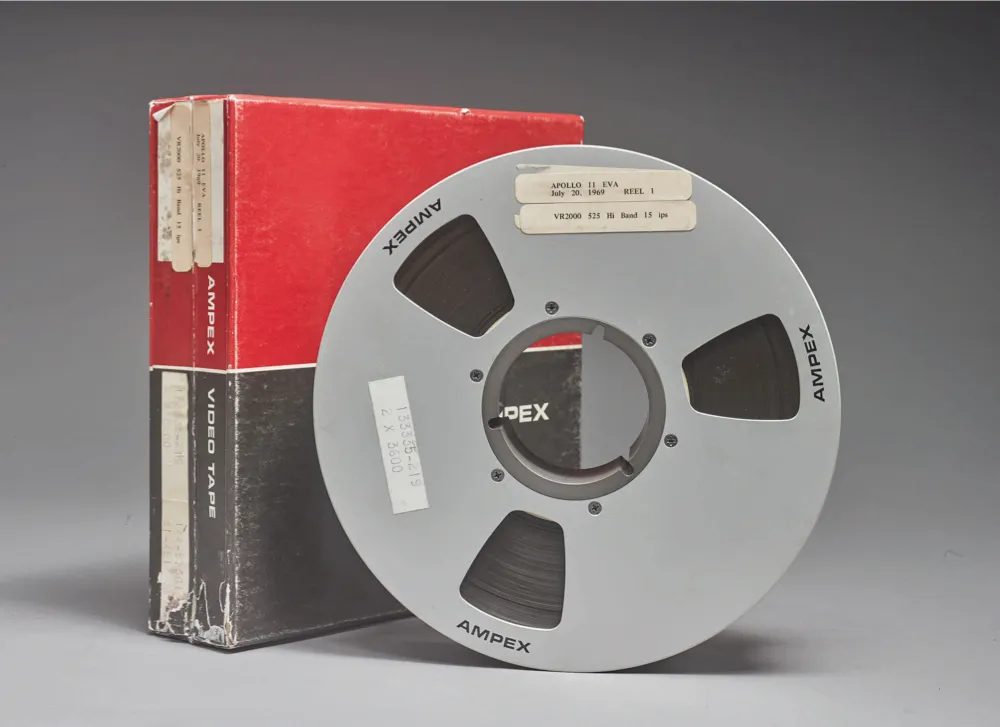
The headline lot of the auction is the earliest, sharpest, and most accurate surviving video recording of man's first steps on the Moon: three original NASA videotapes of the Apollo 11 lunar landing.
Purchased at a Government Surplus Auction directly from NASA in 1976 for $217.77, the tapes are now estimated to sell for $1m-2m.
At a combined run time of 2 hours and 24 minutes, the footage captures everything from Neil Armstrong’s declaration: 'That's one small step for a man, one giant leap for mankind,' marking the historic moment the first human set foot on a celestial body, to the 'long-distance phone call' with the President of the United States, and the planting of the American flag.
For more information on the lots and updates on the live sale,click here.
Highlights from Sotheby's first Space Exploration Sale
In 2017, 48 years to the day after Neil Armstrong took a great leap for man kind by walking on the Moon, his lunar sample bag headlined the first sale of space artefacts to land at Sotheby's for over 20 years.
On first glance lot 102 didn’t look like the kind of object that would fetch over $1.8m at auction. The small white bag, fastened with a brass zip, measured just 12 by 8½ inches. Inside were visible bits of dust. The only hint towards its significance were the words ‘Lunar Sample Return’ printed along the bottom edge.
The reason that over 500 collectors, curators, members of the public and even a group of high school students were watching the sale at Sotheby’s New York was because this was the bag that Neil Armstrong used to bring back the first samples of lunar material to Earth. The particles inside were remaining fragments of lunar rock. Forty-eight years to the day since man first landed on the Moon, space enthusiasts and collectors were bidding millions for its dust.
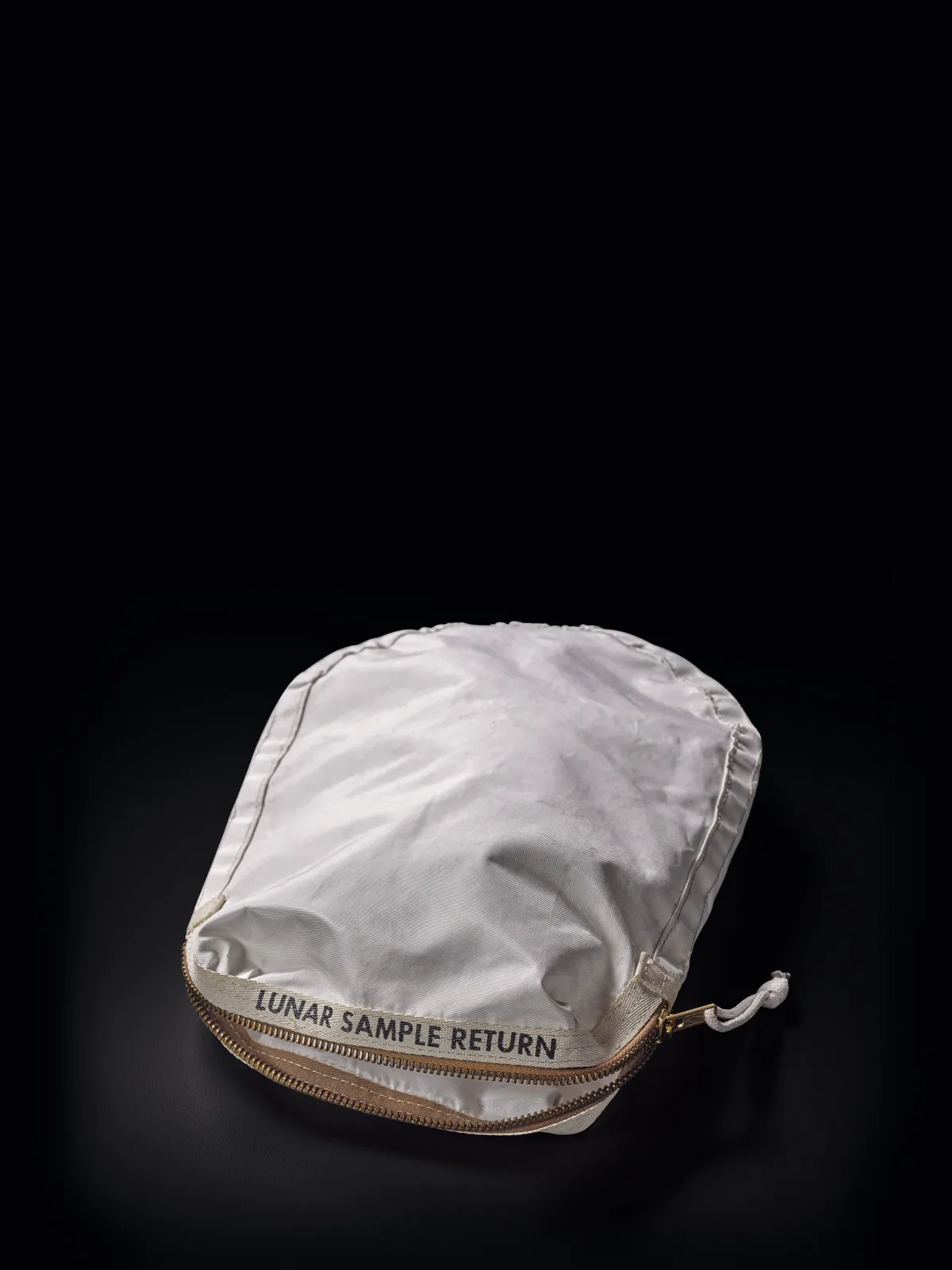
As all other Apollo 11 mission objects are held by America’s Smithsonian Institution, the bag was an exceptionally rare find. Lost for decades, it was not discovered again until 2003 when it was found in the garage of Max Ary, a rogue curator who managed the Cosmosphere space museum in Kansas. The bag was returned to the US government who mislabelled it as a piece from the 1972 Apollo 17 mission.
Bags from Apollo 17 were never used to collect lunar rock and so the bag, when sold by a small auction house on behalf of the US Marshals Service in 2015, went for only $995. The buyer, suspecting that she had bought something significant, sent it for identification at the Johnson Space Center in Houston. Here the bag was identified as an original Apollo 11 piece.
It was sold, for over $1.8m, at the first Space Exploration sale Sotheby’s had held in 21 years.
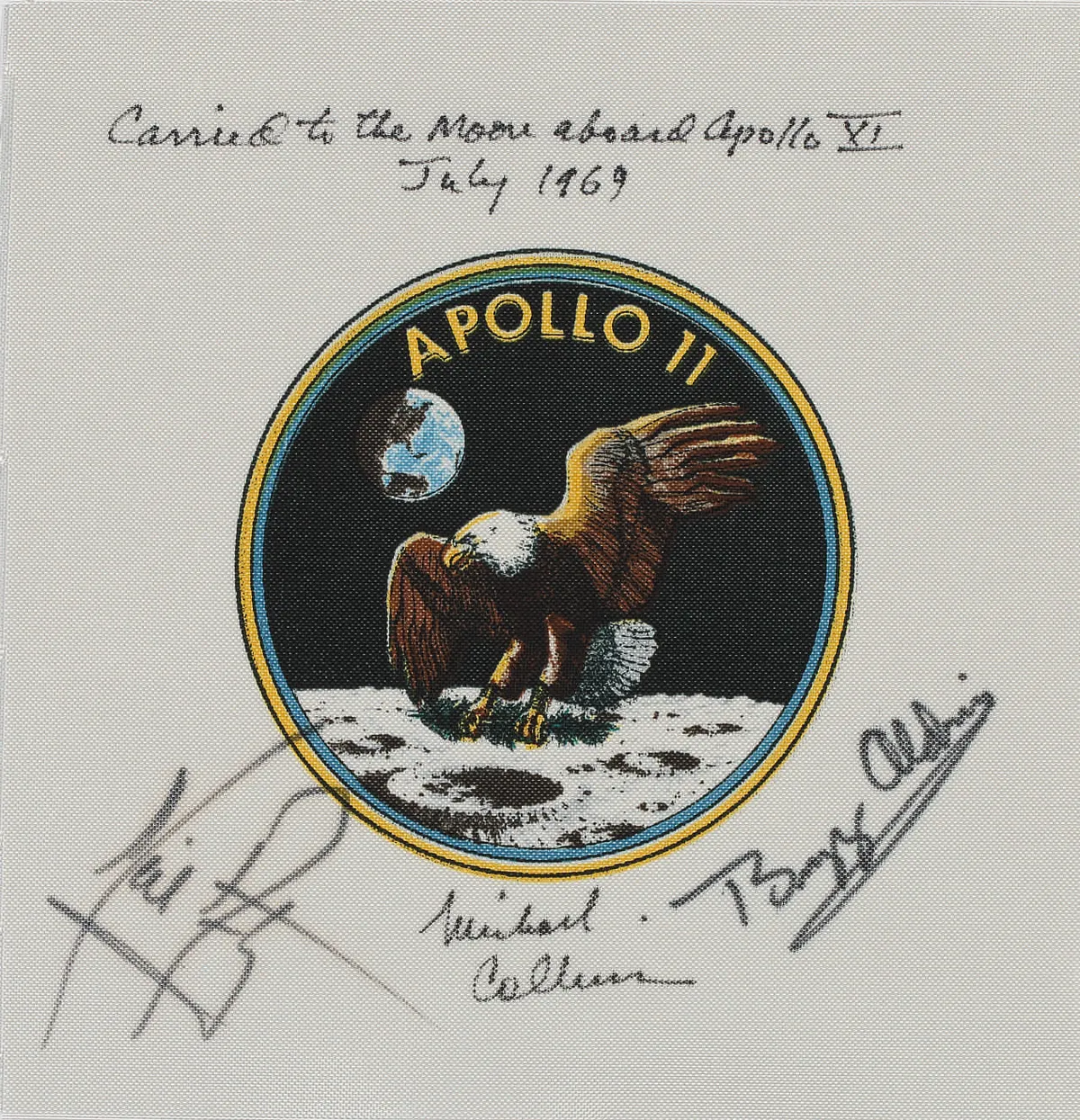
Alongside Armstrong’s sample bag, Sotheby’s also sold a beta cloth with the Apollo 11 emblem, used by Armstrong’s fellow pilot Michael Collins and signed by the Apollo 11 crew, which went over estimate at $68,750.
Also up for sale was the flown flight plan from Apollo 13 – the subject of the eponymous 1995 film in which Tom Hanks utters the immortal line: ‘Houston, we have a problem’. It was the second-highest selling lot at $275,000.
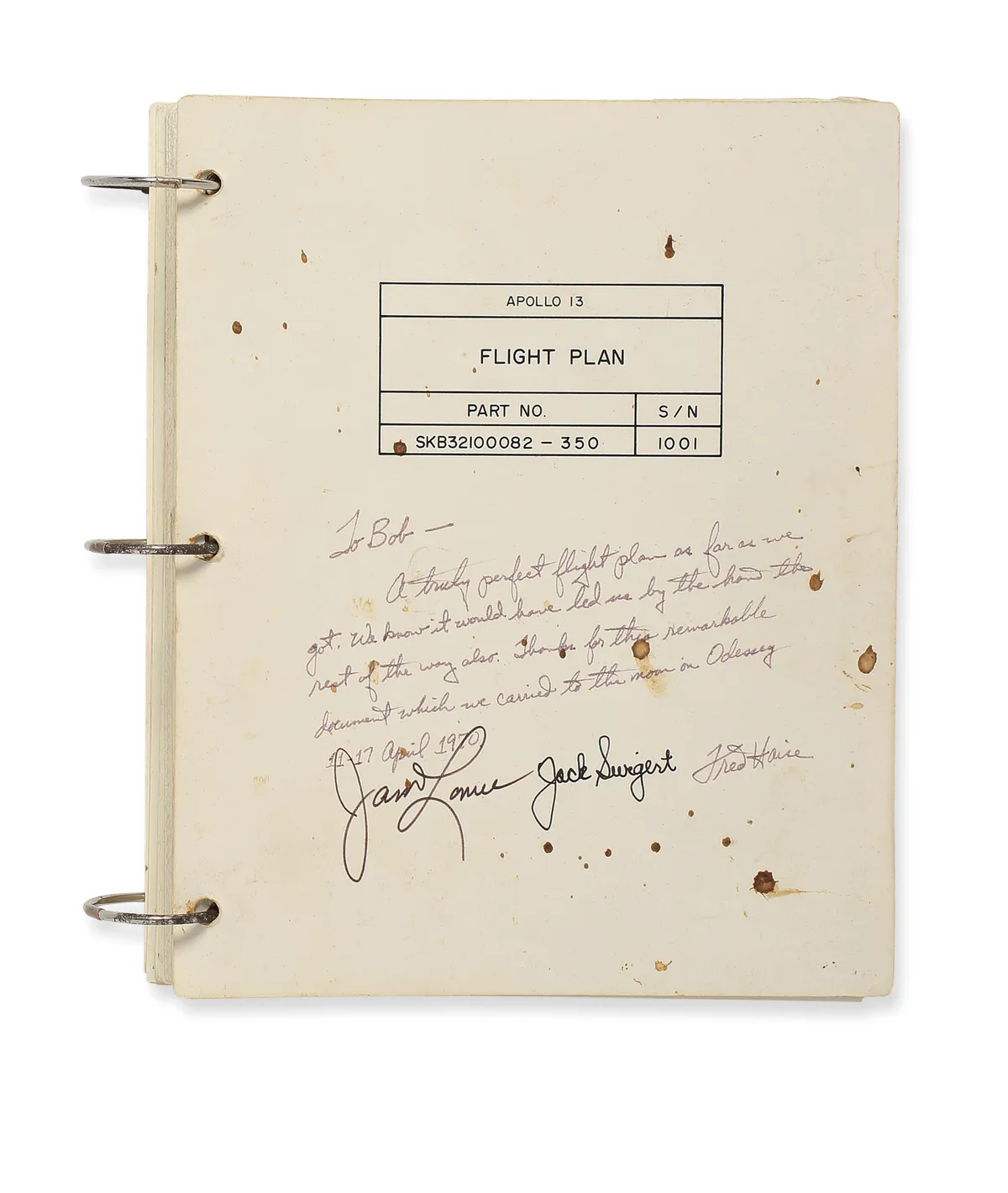
One such keepsake in the sale came from Fred Haise, the lunar module pilot on the unlucky Apollo 13 mission. Lot 141 was the Stars and Stripes flag he had taken with the intention of planting it on the Moon. Due to an oxygen tank explosion, Apollo 13 never made it. The flag, signed by Haise, made $35,000.
For Haise, who remembers the ‘unreal’ views of Earth and it being so cold on board that they had to wear all their spare underwear, the pieces from the Apollo missions are markers of a golden era of space exploration. ‘We have not had an Apollo since and I don’t see it coming again soon,’ he said, speaking at Sotheby’s before the auction. ‘At least not in my lifetime.’
The sale of lunar photographs
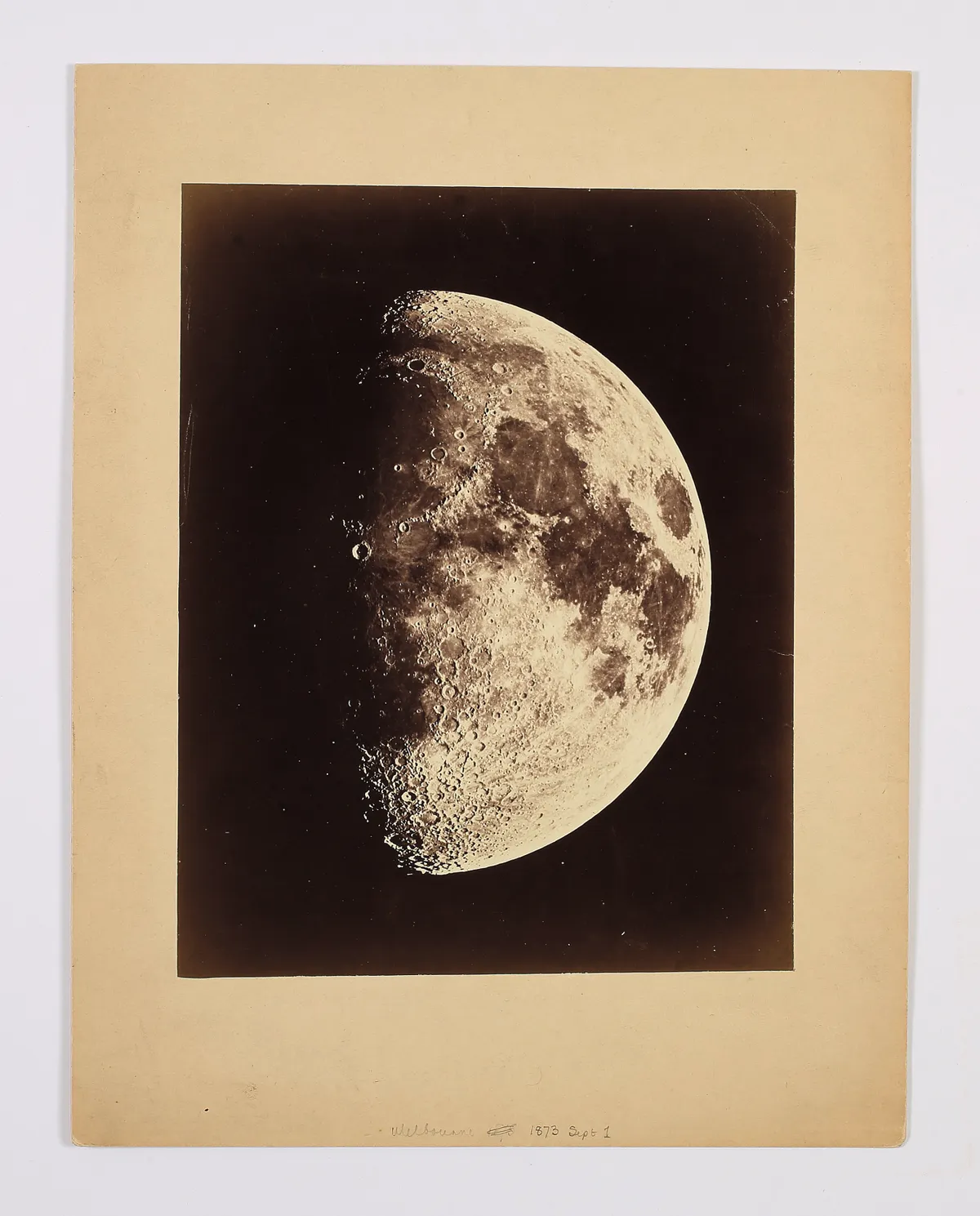
A major feature of the Sotheby’s sale was a set of lunar photographs. The highest priced, an arresting imageof Charlie Duke from the Apollo 16 mission on the moon’s surface (right), fetched $37,500.
Photographs of the Moon have been taken since 1840, when American photographer Dr John William Draper (also credited with taking the earliest clear image of a female face) took the first.
The astronauts on the Apollo missions used adapted Hasselblad cameras to make the most of themeagre light and the resulting prints are highly sought after (not least by the artist Damien Hirst).
‘Vintage NASA photographs are quite difficult to find, especially in good condition,’ says ValentinaBorghi, specialist at Bloomsbury Auctions, which held a sale of more than 600 space photographs in2015. Images from NASA missions will have a red number on the top margin and will be printed on fibrebasedphotographic paper with a Kodak watermark. Other images signed by astronauts are not quite asvaluable as they are likely to be recent prints.
‘A single Apollo 11 image can be sold for £2,000 or even more,’ says Borghi. Asked whether weshould consider lunar photography as science or art, Doug Millard of the Science Museum replies,‘I would say both, or rather the two merge. Science provides the basics but the photographers need tointerpret and exploit those scientific capabilities.’
7 ways to create an interior inspired by the stars
1
Dark, moody walls that mirror a clear night sky make for a potent backdrop in an elegant living room or cosy snug
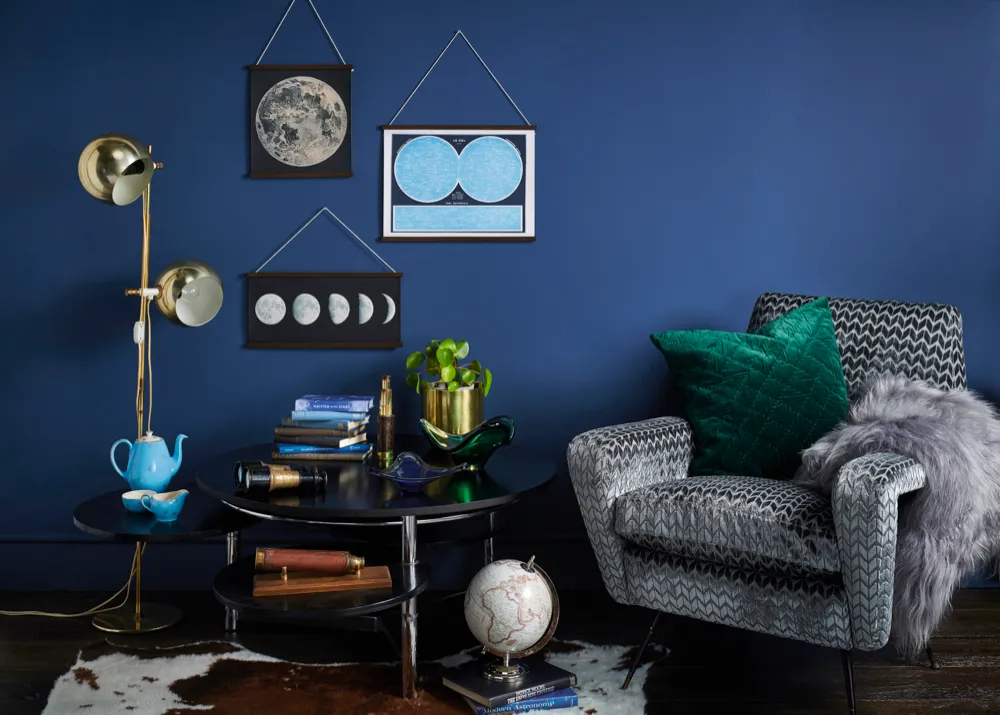
2
Set up a corner of your living room or study with a pair of side tables on which to display astronomy books and intriguing tools for studying the night's sky
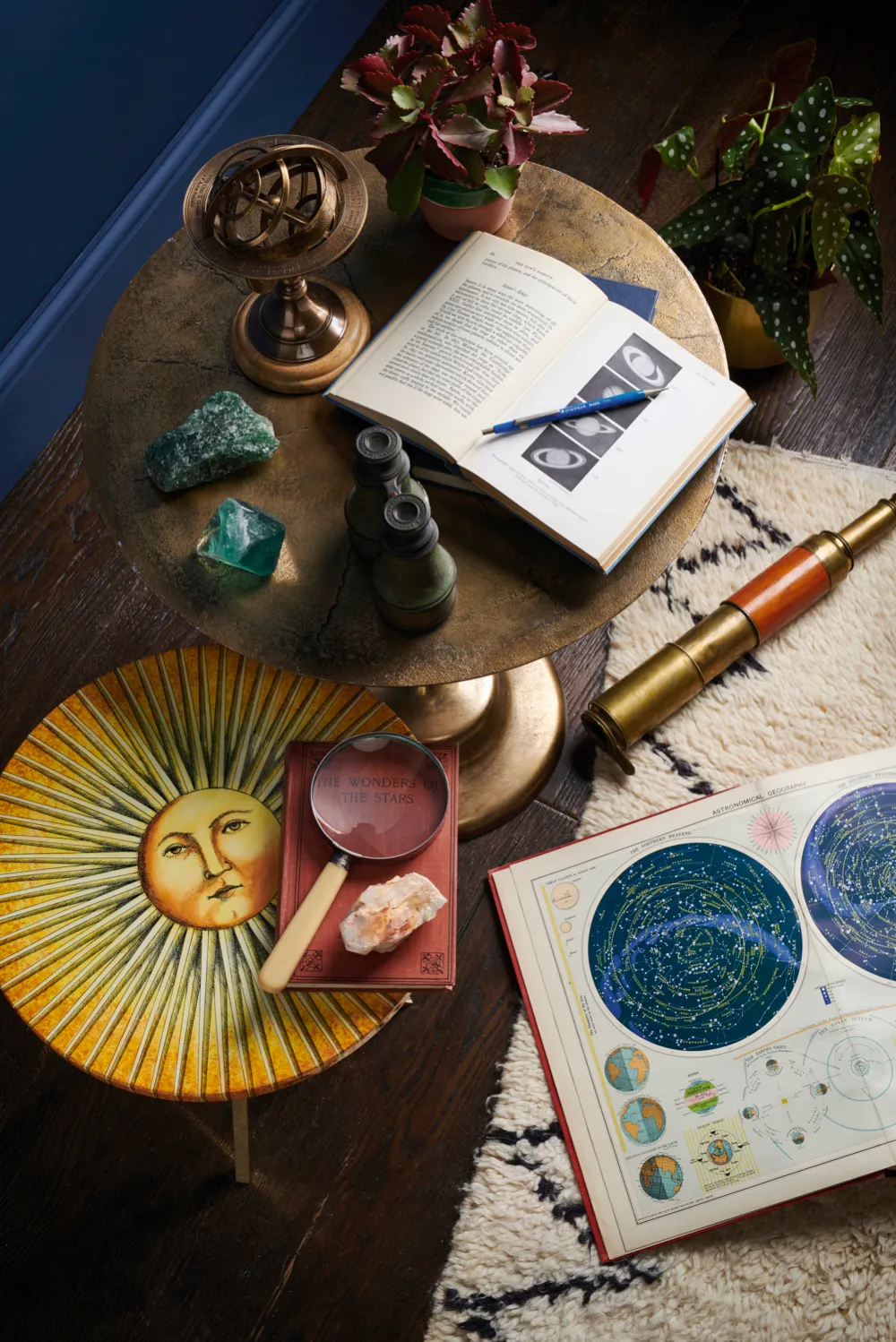
3
Add a retro vibe with sunburst wallpaper, worn vintage leather seating and an oversized lunar chart.
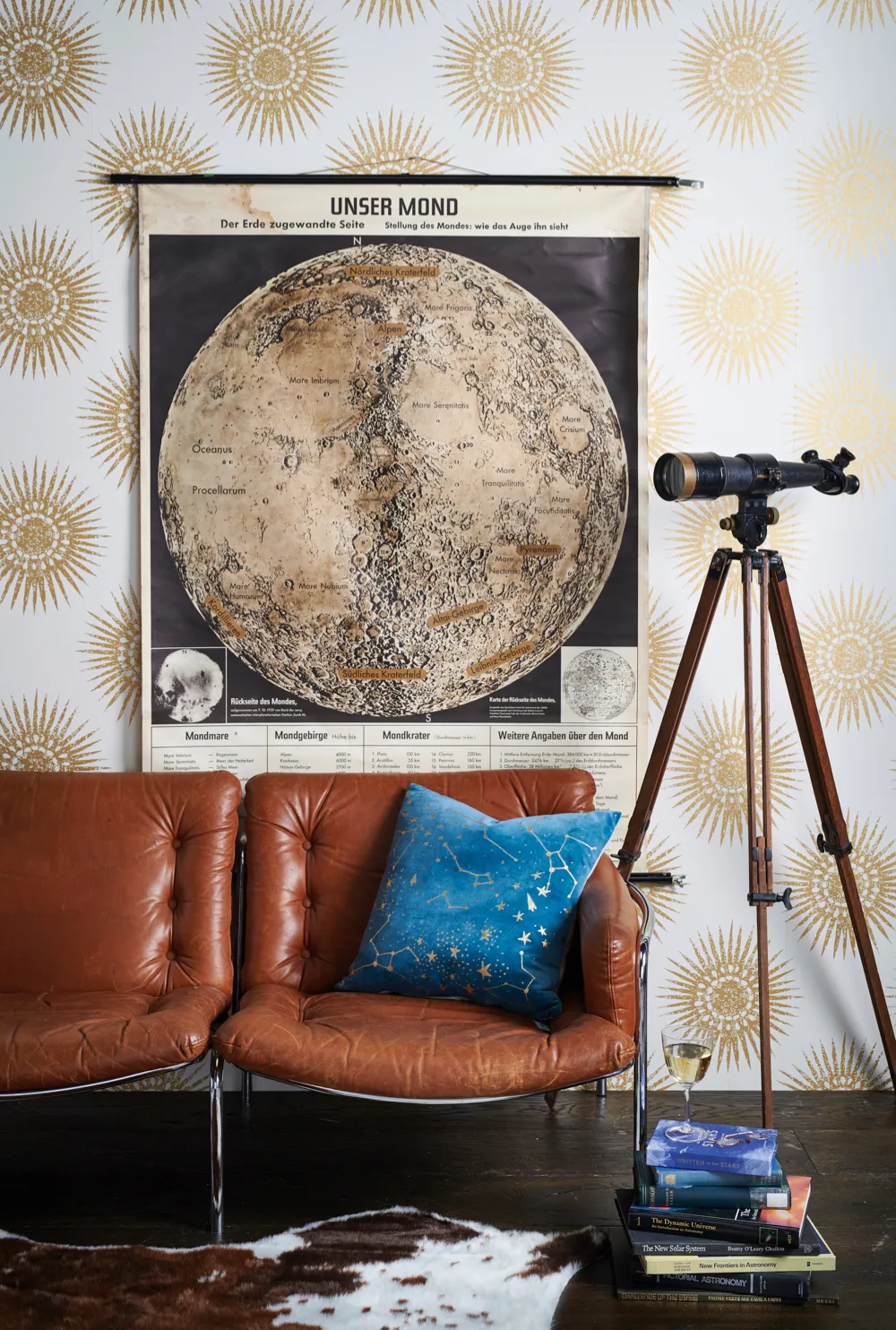
4
The gold stars pop against the blue in this enchanting wallpaper. You can afford to keep accessories and furnishings to a minimum when you have standout pieces such as the elaborate ceiling light and iconic Egg chair.
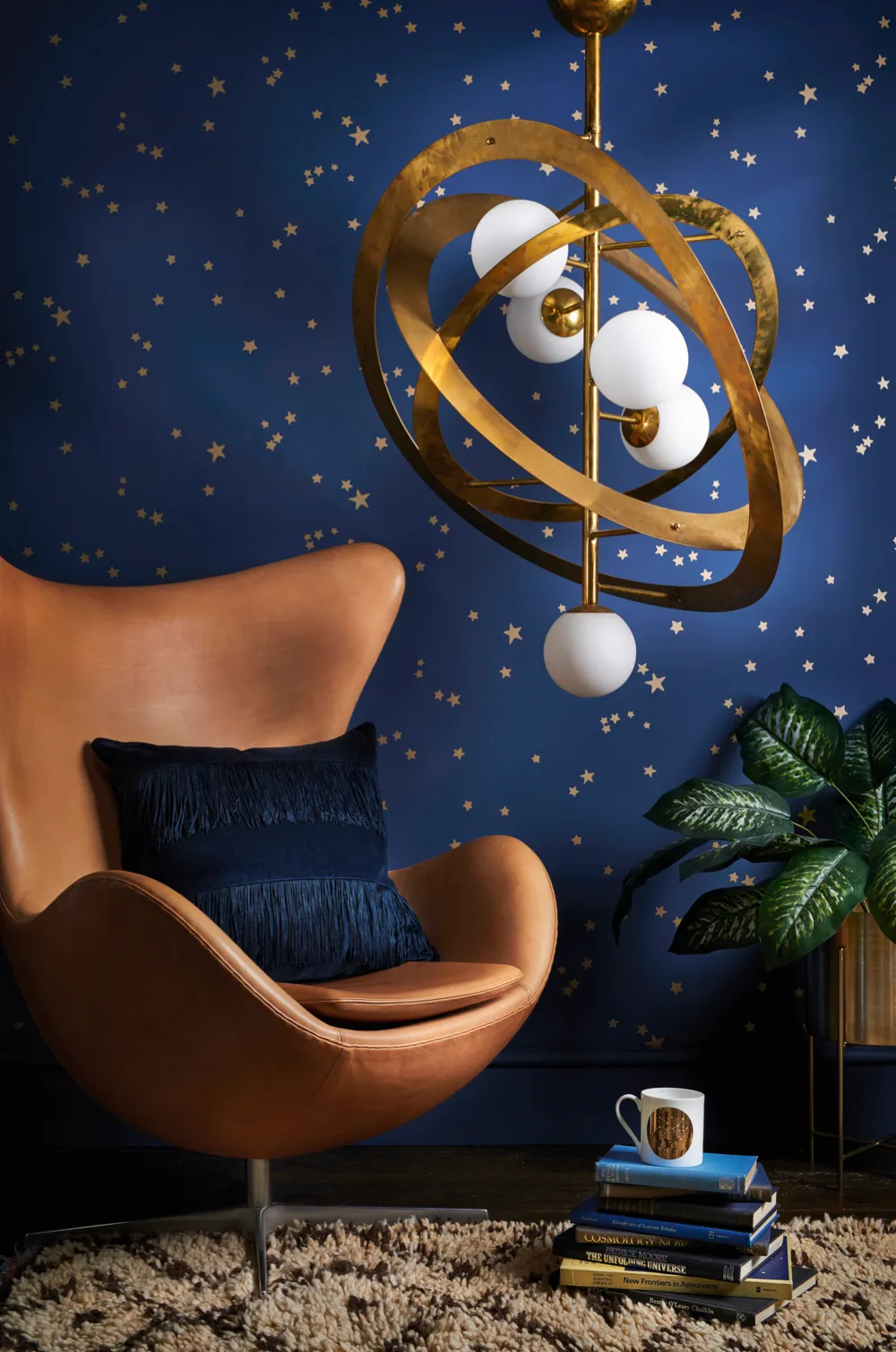
5
Play with shape and scale for a striking arrangement that’s pleasing to the eye as well as the mind.
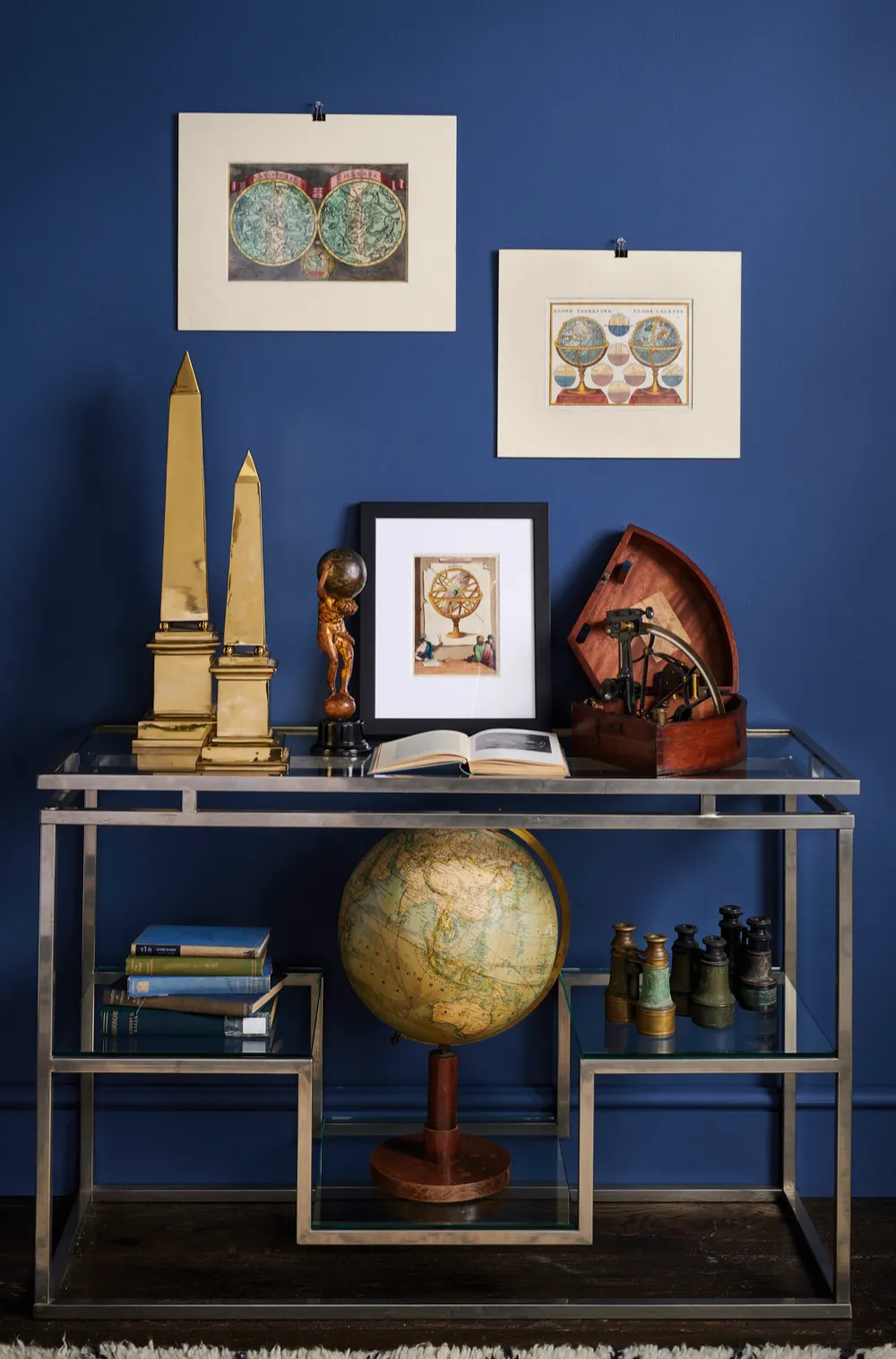
6
Blue and gold is a classic combination, evoking the appearance of stars in space. Choose shimmering metallic tiles and a matching tap, enhanced by a selection of lotions and unguents decanted into old apothecary bottles.
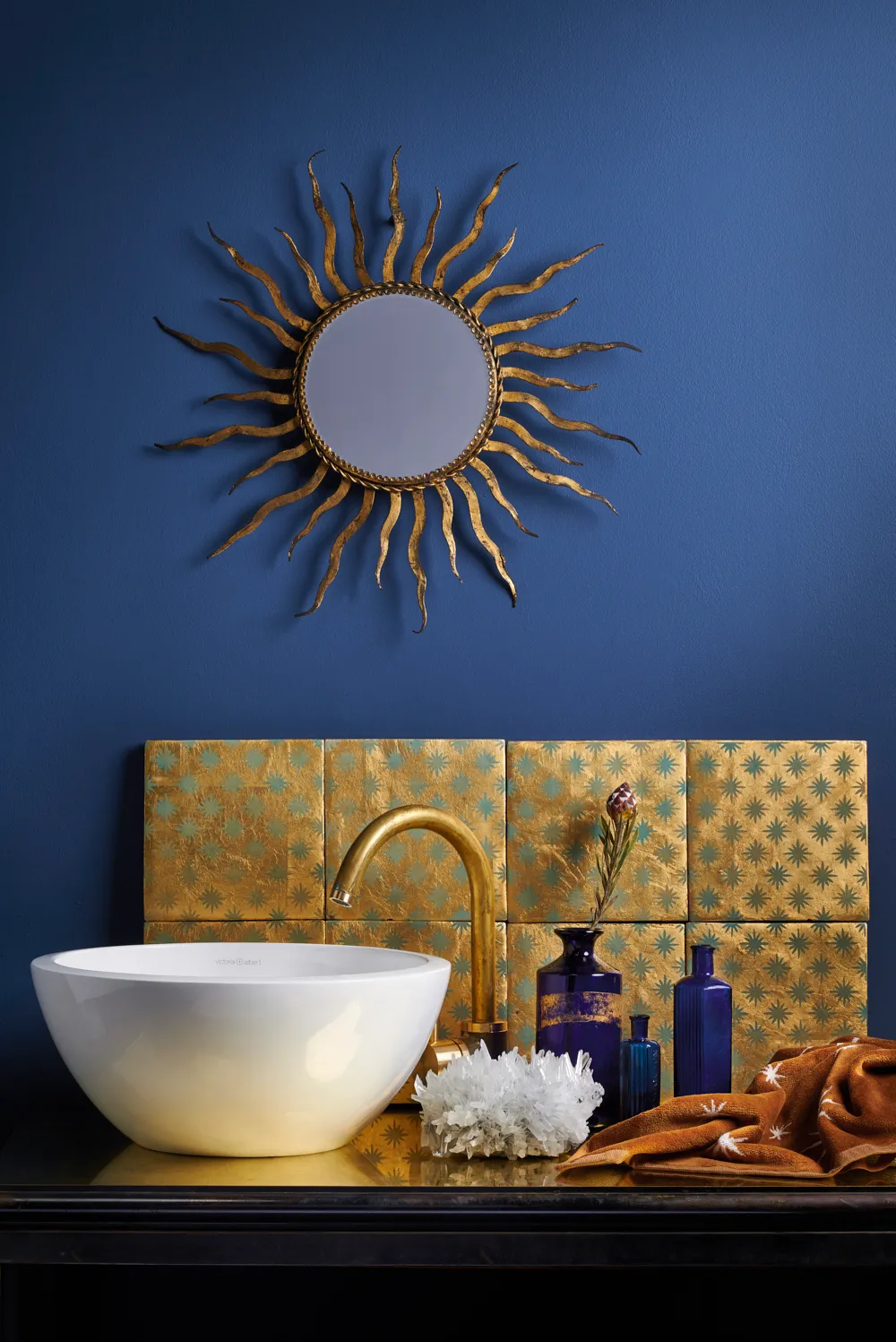
7
A bedroom is the perfect partner for a stargazing theme. Produce a welcoming and calming scene with twinkling stars wallpaper and plenty of soft textiles.
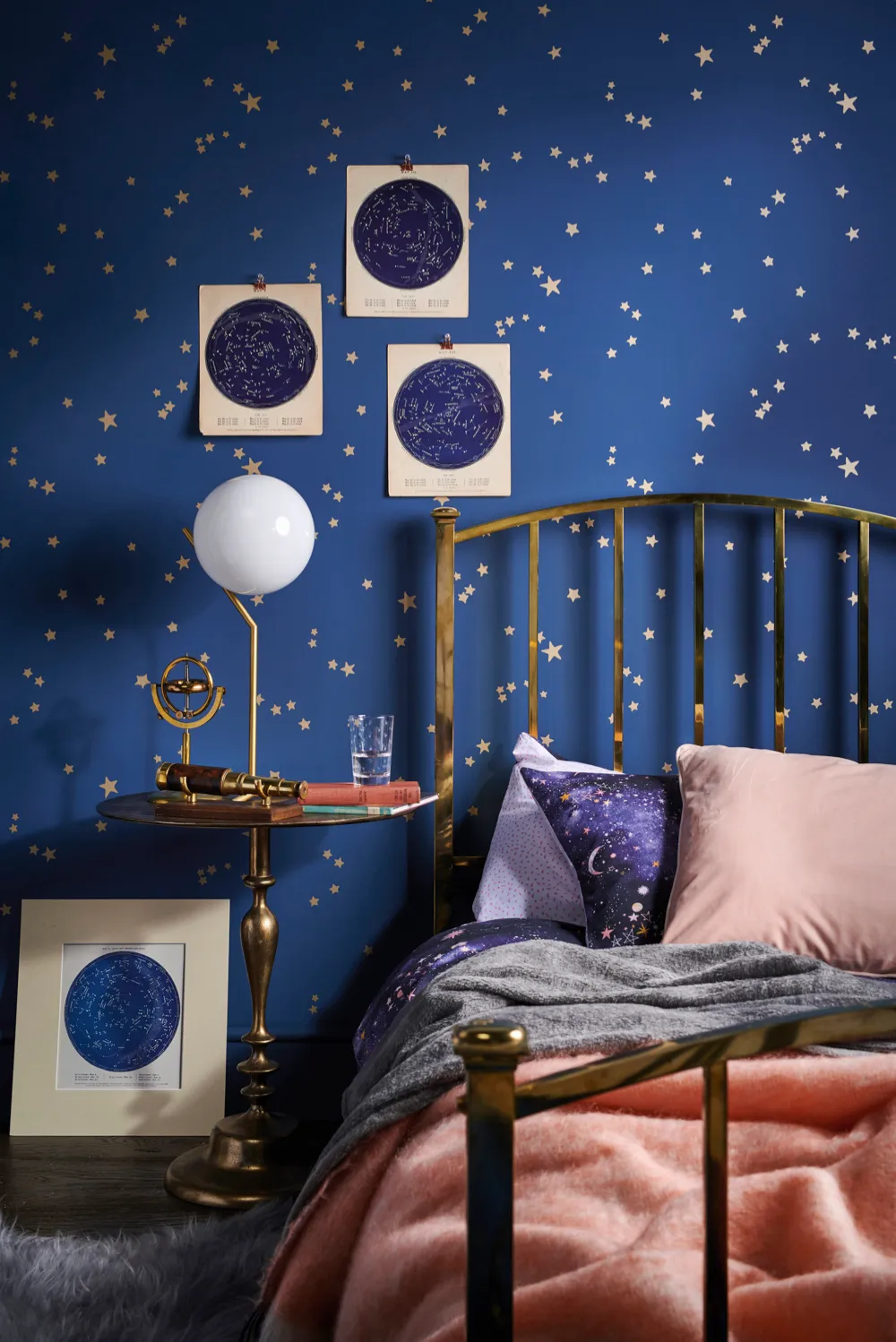
Images: Philip Sowels
Styling: Jaine Bevan
